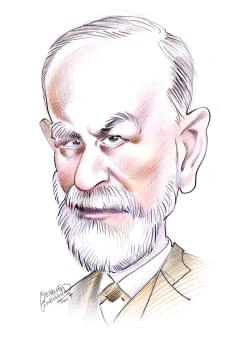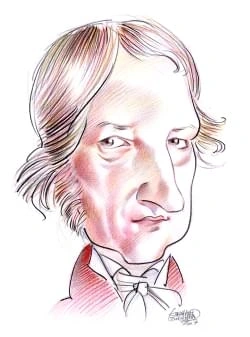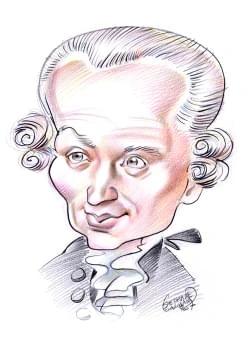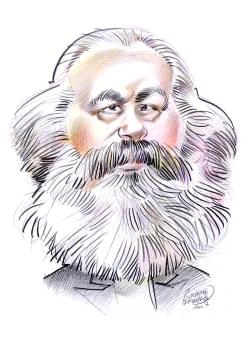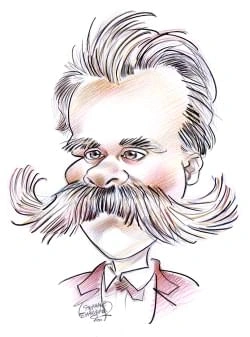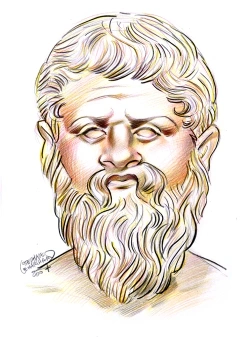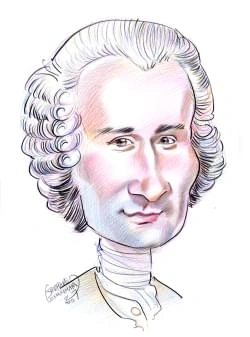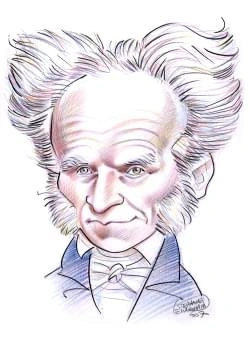474 résultats pour "coloniales"
-
Asie.
1
PRÉSENTATION
Asie, continent du monde, regroupant 46 pays répartis sur six
On pourrait comparer le cœur du massif montagneux de l’Asie à une gigantesque roue, dont les rayons sont formés par de grands cours d’eau qui s’écoulent dans toutes lesdirections. Sept d’entre eux figurent parmi les douze plus longs fleuves du monde. Prenant naissance au nord et au nord-est du massif, la Lena, l’Ienisseï et l’Ob se jettentdans l’océan Arctique. Ils ont auparavant traversé de larges plaines alluviales. Vers l’ouest, des rivières comme l’Ili, le Syr-Daria et l’Amou-Daria dévalent...
-
Native Americans of Middle and South America.
A line that snakes across central Mexico near the Tropic of Cancer forms the northern boundary of Mesoamerica; north of this line rainfall sharply declines and theclimate is much drier. The ancient civilizations of Mesoamerica all arose and developed in the area between this line and the Guatemalan highlands far to the south. Richvolcanic soils are found throughout much of the region. A2 People and Languages Mesoamerica was a great melting pot, home to many peoples and interrelated cultures. In...
-
Guatemala - country.
C Climate The climate of Guatemala varies according to elevation, from hot coastal plains to cold mountain heights. Most of the population lives between 900 and 2,400 m (3,000and 8,000 ft) above sea level, where there are warm days and cool nights with average annual temperatures of 20°C (68°F). The coastal regions are hot and humid,with average annual temperatures of 28°C (83°F). A rainy season, from May through October, is sometimes called “winter” because it brings cloudy afternoons andlower...
-
urbanisme
1
PRÉSENTATION
urbanisme, discipline de la géographie et de l'architecture dont l'objet est l'aménagement et l'organisation des villes et de leurs environs.
2.5 L’urbanisme du Nouveau Monde Ces thèmes de l’urbanisme de la Renaissance et de la mise en perspective de la ville ont été transposés dans le Nouveau Monde, dans les cités coloniales anglaises etespagnoles fondées aux XVIe et XVII e siècles, entre autres Savannah dans l’État de Géorgie, Williamsburg en Virginie ou Mexico au Mexique et Lima au Pérou. Disposant de larges espaces vierges pour y implanter des structures urbaines, les bâtisseurs des villes américaines ont pu progressivement expé...
- Questions pour comprendre le XXe siècle
-
Louis XIV
I
INTRODUCTION
Louis XIV (1638-1715), king of France (1643-1715), known as the Sun King.
he could defend against attack from his enemies. In the first instance, Louis worked to tighten central control over the array of departments, regions, and duchies that together made up France. To this end, he revivedthe use of regional intendants, officials who were sent to the provinces with instructions to establish order and effective royal justice. Although agents of the centralgovernment, intendants worked closely with the local nobility and legal institutions to establish efficient admini...
-
Louis XIV.
he could defend against attack from his enemies. In the first instance, Louis worked to tighten central control over the array of departments, regions, and duchies that together made up France. To this end, he revivedthe use of regional intendants, officials who were sent to the provinces with instructions to establish order and effective royal justice. Although agents of the centralgovernment, intendants worked closely with the local nobility and legal institutions to establish efficient admini...
-
Connecticut - geography.
The state’s shoreline, when all the bays and inlets are taken into account, has a total length of 995 km (618 mi). The coastline is deeply indented by long estuaries androcky inlets, and there are many sandy beaches and stretches of tidal marsh. There are several good harbors along the coast, the most important of which is at NewHaven. A few small islands lie offshore in Long Island Sound. D Climate Connecticut has long, hot summers and cold winters. The climate does not vary greatly from place...
-
-
Connecticut - USA History.
The state’s shoreline, when all the bays and inlets are taken into account, has a total length of 995 km (618 mi). The coastline is deeply indented by long estuaries androcky inlets, and there are many sandy beaches and stretches of tidal marsh. There are several good harbors along the coast, the most important of which is at NewHaven. A few small islands lie offshore in Long Island Sound. D Climate Connecticut has long, hot summers and cold winters. The climate does not vary greatly from place...
-
Asia - Geography.
Borneo, the world’s third largest island after Greenland and New Guinea. To the southeast is the Timor Sea separating the Asian island of Timor from the Australiancontinent. The Indian subcontinent is flanked by the Bay of Bengal on the east and the Arabian Sea on the west. The island of Sri Lanka and the much smaller Maldives andNicobar Islands trail away to the south. The Arabian Sea’s Gulf of Aden, the Red Sea, the Mediterranean Sea, and the Black Sea form an arc along the western rim of Asia...
-
Asia - History.
Borneo, the world’s third largest island after Greenland and New Guinea. To the southeast is the Timor Sea separating the Asian island of Timor from the Australiancontinent. The Indian subcontinent is flanked by the Bay of Bengal on the east and the Arabian Sea on the west. The island of Sri Lanka and the much smaller Maldives andNicobar Islands trail away to the south. The Arabian Sea’s Gulf of Aden, the Red Sea, the Mediterranean Sea, and the Black Sea form an arc along the western rim of Asia...
-
Virginia (state) - geography.
C Coastline Virginia’s coastline, for both the mainland and the Eastern Shore counties, is 180 km (112 mi) long. The state’s tidal shoreline measures 5,335 km (3,315 mi), includingall bays, inlets, tidal estuaries, and other indentations. Major indentations include Chesapeake Bay; Hampton Roads, the excellent natural harbor on which are locatedNewport News, Norfolk, and Portsmouth; and the wide tidal estuaries of the lower Potomac, James, Rappahannock, and York rivers. Cape Henry, in the southe...
-
Virginia (state) - USA History.
C Coastline Virginia’s coastline, for both the mainland and the Eastern Shore counties, is 180 km (112 mi) long. The state’s tidal shoreline measures 5,335 km (3,315 mi), includingall bays, inlets, tidal estuaries, and other indentations. Major indentations include Chesapeake Bay; Hampton Roads, the excellent natural harbor on which are locatedNewport News, Norfolk, and Portsmouth; and the wide tidal estuaries of the lower Potomac, James, Rappahannock, and York rivers. Cape Henry, in the southe...
-
Trinidad and Tobago - country.
III PEOPLE The history of Trinidad and Tobago is reflected in the makeup of its population, among the most ethnically diverse in the Caribbean. Blacks of African ancestry andAsians of Indian ancestry each make up about 40 percent of the population. The remainder is mainly of mixed ancestry, although there are also small groups of peopleof Chinese, European, South American, and Middle Eastern descent. The ethnic diversity of Trinidad and Tobago owes its origins to slavery and its abolition. Afr...
-
Cuba - country.
Only two land mammals, the hutia, or cane rat, and the solenodon, a rare insectivore that resembles a rat, are known to be indigenous. The island has numerous batsand nearly 300 kinds of birds, including vultures, wild turkeys, quail, finches, gulls, macaws, parakeets, and hummingbirds. The bee hummingbird of Cuba is thesmallest bird in the world. Among the few reptiles are tortoises, caimans, the Cuban crocodile, and a species of boa that can attain a length of 3.7 m (12 ft). More than700 speci...
-
Canada.
Six general landform regions are distinguishable in Canada: the Appalachian Region, the Great Lakes and St. Lawrence Lowlands, the Canadian Shield, the Great Plains,the Canadian Cordillera, and the Canadian Arctic Archipelago. B1 Appalachian Region and Great Lakes and St. Lawrence Lowlands Eastern Canada consists of the Appalachian Region and the Great Lakes and St. Lawrence Lowlands. The Appalachian Region embraces Newfoundland Island, NovaScotia, New Brunswick, Prince Edward Island, and the G...
-
-
Canada - country.
Six general landform regions are distinguishable in Canada: the Appalachian Region, the Great Lakes and St. Lawrence Lowlands, the Canadian Shield, the Great Plains,the Canadian Cordillera, and the Canadian Arctic Archipelago. B1 Appalachian Region and Great Lakes and St. Lawrence Lowlands Eastern Canada consists of the Appalachian Region and the Great Lakes and St. Lawrence Lowlands. The Appalachian Region embraces Newfoundland Island, NovaScotia, New Brunswick, Prince Edward Island, and the G...
-
Canada - Canadian History.
Six general landform regions are distinguishable in Canada: the Appalachian Region, the Great Lakes and St. Lawrence Lowlands, the Canadian Shield, the Great Plains,the Canadian Cordillera, and the Canadian Arctic Archipelago. B1 Appalachian Region and Great Lakes and St. Lawrence Lowlands Eastern Canada consists of the Appalachian Region and the Great Lakes and St. Lawrence Lowlands. The Appalachian Region embraces Newfoundland Island, NovaScotia, New Brunswick, Prince Edward Island, and the G...
-
France - country.
In both the Paris and Aquitaine basins, fertile soils derived from limestone and wind-deposited dust, called loess, have supported prosperous agriculture since ancienttimes. Other lowlands in France are scattered and relatively small. They include the Alsace Plain in the east, bordering Germany, the valley of the Rhône River in thesoutheast, and the Languedoc Plain along the Mediterranean coast. A2 Uplands France contains several regions of uplands, the worn down remains of ancient mountain sys...
-
Latin American Painting
I
INTRODUCTION
Diego Rivera Museum Gallery
The studio of Mexican painter Diego Rivera is now maintained as an art museum in Mexico City.
The Viceroy Arrives at PotosíThe discovery of silver on a hillside near the town of Potosí in 1545 turned this Bolivian city into a key Spanish possessionin the Americas. The population of Potosí shot up until it reached 150,000 inhabitants by the year 1611. The work shownhere, The Viceroy Arrives at Potosí, by 17th-century Bolivian painter Melchor Pérez de Holguín, was painted during thezenith of the town’s fortunes.Archivo Fotografico Oronoz From about 1580 to 1650 European styles became domin...
-
United Kingdom - country.
B Natural Regions and Topography The island of Great Britain can be divided into two major natural regions—the highland zone and the lowland zone. The highland zone is an area of high hills andmountains in the north and west. The lowland zone in the south and east consists mostly of rolling plains. The zones are divided by an imaginary line running throughEngland from the River Exe on the southwest coast to the mouth of the River Tees on the northeast coast. The lowland zone has a milder climat...
-
Library (institution).
rooms, special galleries for exhibitions, auditoriums for lectures or concerts, computer rooms, children’s rooms, photocopy rooms, and classrooms. A3 Lending Materials As part of their mission to provide information resources to the community, public libraries allow users to borrow items from their collections for limited amounts of time.To be eligible to borrow public library materials, a user must register her or his name, address, and other basic information with the local library’s circulat...
- France (histoire)
-
Japan - country.
island’s fertile soils support agriculture and provide the vast majority of Japan’s pasturelands. In addition, Hokkaidō contains coal deposits, and the cold currents off itsshores supply cold-water fish. Winters are long and harsh, so most of Hokkaid ō is lightly settled, housing about 5 percent of Japan’s population on approximately 20 percent of its land area. However,its snowy winters and unspoiled natural beauty attract many skiers and tourists. Hokkaid ō is thought of as Japan’s northern fr...
}})
